McWay Falls: Beauty & History in Big Sur
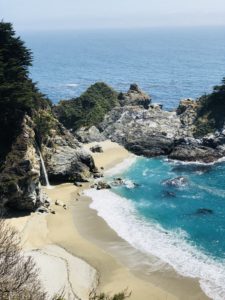
Have you ever imagined living in a home overlooking a gorgeous ocean cove, with a redwood forest behind you? What if you could look out your bedroom window and see an 80-foot waterfall cascading down a granite cliff onto a beautiful beach? One lucky couple, Congressman Lathrop Brown and his wife, Helene, were privy to this view for many years. Lathrop Brown served as best man at his friend Franklin Delano Roosevelt’s wedding. His wife, Helene, was a wealthy heiress. In 1924 they visited Big Sur and became smitten with the area. They purchased Saddle Rock Ranch from pioneer homesteader Christopher McWay. They built a crude redwood cabin at the top of the cliffs facing McWay Falls. In 1940, they replaced this with a fancy two-story mansion. They named it “Waterfall House”.
Waterfall House featured fine furnishings, paintings, and an entryway inlaid with brass fish, a gold octopus, and a rose compass. Their ranch foreman, Hans Ewoldsen, built a Pelton wheel from hand-split redwood and installed it on McWay Creek in 1932. This wheel supplied a 32-volt generator with the first source of electricity in Big Sur. It powered three homes, a blacksmith shop, and a funicular railway. What is a funicular railway, you ask? It is a railway on an incline. The Browns used a modified mining car operated by cable to travel up and down the steep Big Sur slope.
The Browns left Big Sur for Florida in 1956, and after her husband died, Helene donated the property to the state for a museum and park. For various reasons, the home was demolished in 1965. Helene had stipulated that the park be named for her friend, Julia Pfeiffer Burns, “a true pioneer”. Julia, with her husband, raised cattle at Saddle Rock Ranch before the Browns’ arrival. At the overlook of McWay Falls, you can still see vestiges of the Brown home, landscaping, and railway.
Photographers love this area, and it is easy to see why. The sand is often purple from the erosion of manganese garnet which is carried down the creek to the beach. This is generally more apparent after winter storms. Light plays on the colored sand and waves crash through sea sculptured arches and rock formations, creating a beautiful vista. The hills are covered with wild yarrow and pink morning glories. The area is surrounded by redwood, tan oak, madrone, and chaparral. Tall, stately eucalyptus trees line the trail and fill the air with their scent.
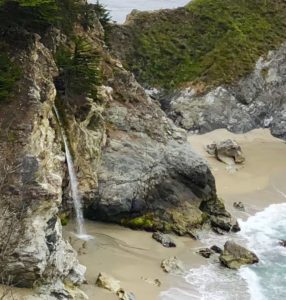
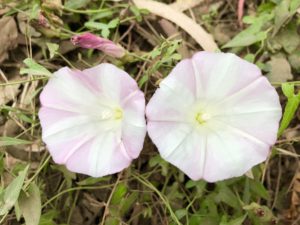
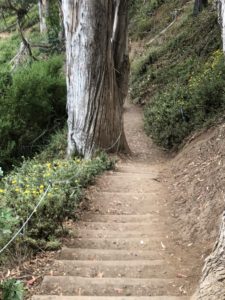
The waterfall flows year round from McWay Creek and is one of only two entering the ocean in California. Visitors are not allowed access to the beach to protect the marine resources and the pristine beauty of the cove. Per Julia Pfeiffer Burns State Park, ” Cliff areas beyond the fenced boundaries, including the BEACH, SADDLE ROCK and MCWAY FALLS area are completely off limits. Trespassing into these closed areas is a serious offense, resulting in a citation and arrest. The areas are extremely hazardous.” Be safe and stay on the Waterfall Trail.
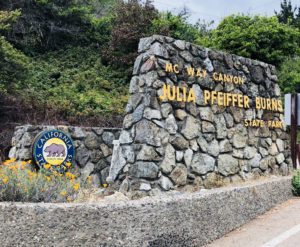
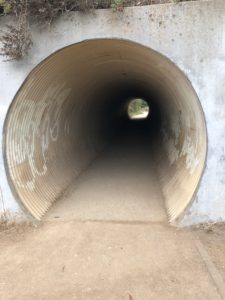
You can reach McWay Falls either by 1. parking at JPBSP and walking through a short tunnel under the highway, or 2. parking alongside highway 1 and hiking on the Waterfall Trail to the viewing area. There is a 10.00 fee to park at JPBSP. It opens 30 minutes before sunrise and closes 30 minutes after sunset. There are restrooms available there. If you park along the highway, be mindful of traffic as this is a busy road. Also, if you park on the road, you will have to go down a set of several steps to reach the trail. You may also want to bring a sweater or jacket as it can get quite blustery here.
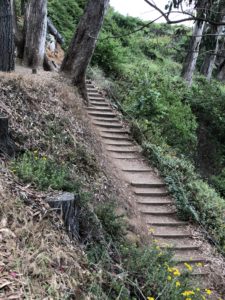
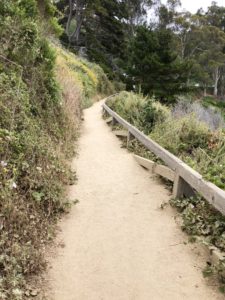
For more information see parks.ca.gov Thank you for visiting my blog! Wishing you peace, love, happiness, and beautiful vistas!